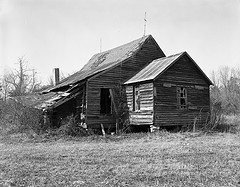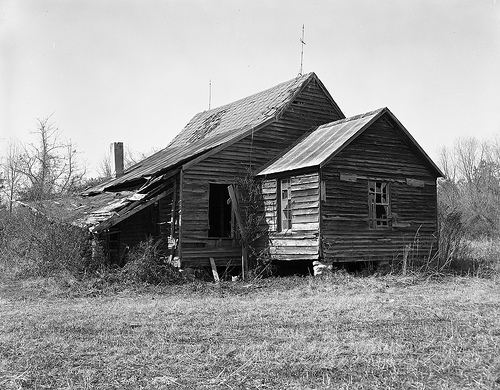A full-page ad that ran in the September 30 edition of the News & Observer kicked off a number of conversations on social media, several of which noted the historical importance of taverns and bars to the city of Raleigh.
We decided to look into it.
An essay put out by the North Carolina Office of Archives & History and quoted on Twitter gives credence to this claim. It notes that Raleigh’s location:
“Was determined not by topography or climate, but rather by distance from a popular tavern in what was then Johnston County.

Isaac Hunter’s Tavern, exterior, Raleigh, NC, 1969, photos by Charles Clark. From the Survey and Planning images, General Negative Collection, North Carolina State Archives, Raleigh, NC.
Strategically placed alongside a major travel artery through North Carolina, the tavern owned by Isaac Hunter (1745-1823) earned a reputation for quality food and spirits, making the establishment a landmark for locals and travelers alike.
Hunter’s tavern was so well known that, in 1788, the Constitutional Convention met in the restaurant and mandated the new state capital be built no more than ten miles away.”
The book “North Carolina’s Capital Raleigh” notes that some detractors at the time argued that the capital should not be “situate” [sic] in a lonely grove of oaks, inland from any port, a place without populace, amid thorn and briar with nothing to recommend it but a courthouse, an inn and two or three scattered residences.
The current debate over downtown’s vibrancy takes place in a much different environment, although it’s not the first time Raleigh residents have pushed back against downtown bars and the accompanying revelry. In comparison to past struggles, however, there appears to be much less at stake in the present debate.
According to the book “Raleigh: An Unorthodox History of North Carolina’s Capital” by Marshall Lancaster, a society calling itself the “Ice Water Regulars” formed in 1800 and “staged alcohol-free outings reminiscent of efforts at today’s high school proms.” At the time, Raleigh had only 669 residents.
In 1874, ongoing efforts supporting prohibition claimed that liquor had “caused most of the pauperism and crime in the city,” and that the prohibitionists were not concerned that the city would “lose $4,500 in annual license revenue and that sixty business houses … will be made vacant,” wrote Lancaster.
Prohibitionists that year also said that the city’s residents had been “cursed by licensed dram-shops” and that a one-year shutdown would be “for the good of the rum-ridden majority.”
12 years later, liquor was banned by a 60-vote majority. Lancaster noted that while arrests for public drunkenness fell from 300 to 150 per year, the police chief reported that “the people of the city have been more bellicose during the past year than the year before.”
Two years later, on July 2, 1888, the ban was overturned. In 1908, the state of North Carolina adopted prohibition.
According to Lancaster, the newspaper the Raleigh Times lamented at the time that “the Old North State is now scheduled to become the ‘toddyless Sahara’ for which the prohibition forces have long labored.”
From Raleigh: An Unorthodox History of North Carolina’s Capital:
The present generation, an observer wrote in 1930, “has scant conception of the situation which existed in Raleigh 45 or 50 years ago. Vice flourished in forms which would be tolerated no-where today.
Streets there were in the heart of the city down which no woman would walk and preserve a stainless name. There were from 30 to 40 licensed saloons, a grog shop for less than every 300 of population. These places were open on Sunday and their hours were still unrestricted.”
